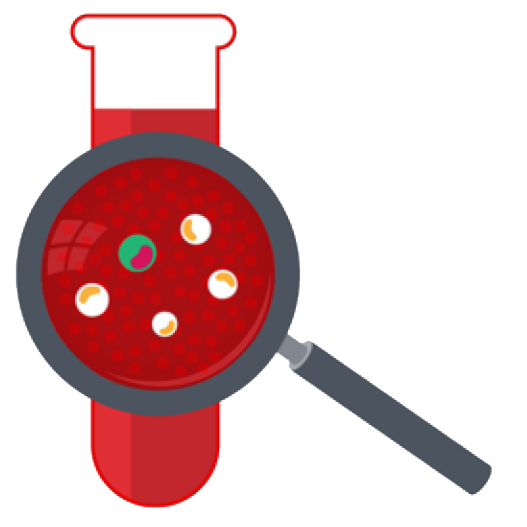
Liquid Biopsy
The traditional way of obtaining information about cancer is solid tissue biopsy, which is an invasive procedure to remove a piece of tissue from the body so that the cancer cells can be analyzed in a laboratory. The major limitation of solid tissue biopsy is that it is not repeatable, and mostly can be used only in initial diagnosis. Liquid biopsy requires just a simple blood draw and represents an easy, effective and repeatable alternative to solid tissue biopsy for obtaining cancer cells. The two main components of liquid biopsy are circulating tumor cells (CTCs) and circulating cell-free tumor DNA (ctDNA).

Circulating Tumor Cells (CTCs)
CTCs are intact cancer cells that disseminate from the tumor and enter the bloodstream. Some CTCs have the potential to form a new tumor in a separate tissue by metastasis which is responsible for 90% of cancer-related deaths. CTCs give access to the full cellular morphology and genetic content allowing DNA, RNA, and protein expression analysis as in the solid tissue biopsy. ctDNAs are fragments of dead cancer cells in the bloodstream and allow only DNA level analysis and provide limited information compared to CTCs.

Benefits of CTC Analysis
- Accessing the molecular information of tumor for detection of actionable mutations to identify personalized therapy options.
- Real-time monitoring of tumor evolution and therapy response during the treatment.
- CTCs are associated with recurrence of cancer and detection of CTCs allow early diagnosis of relapse.
- Use of CTCs in basic research allows better understanding of cancer and development of new therapies.
The Challenge
Capturing CTCs from blood is a challenging process due to their extreme rarity in peripheral blood (1 in a billion) and lack of a universal cell surface marker that can efficiently capture heterogeneous CTC populations.
Cellsway overcomes these challenges by its unique microfluidic technology that enables high recovery CTC isolation from blood in an antigen-independent manner

